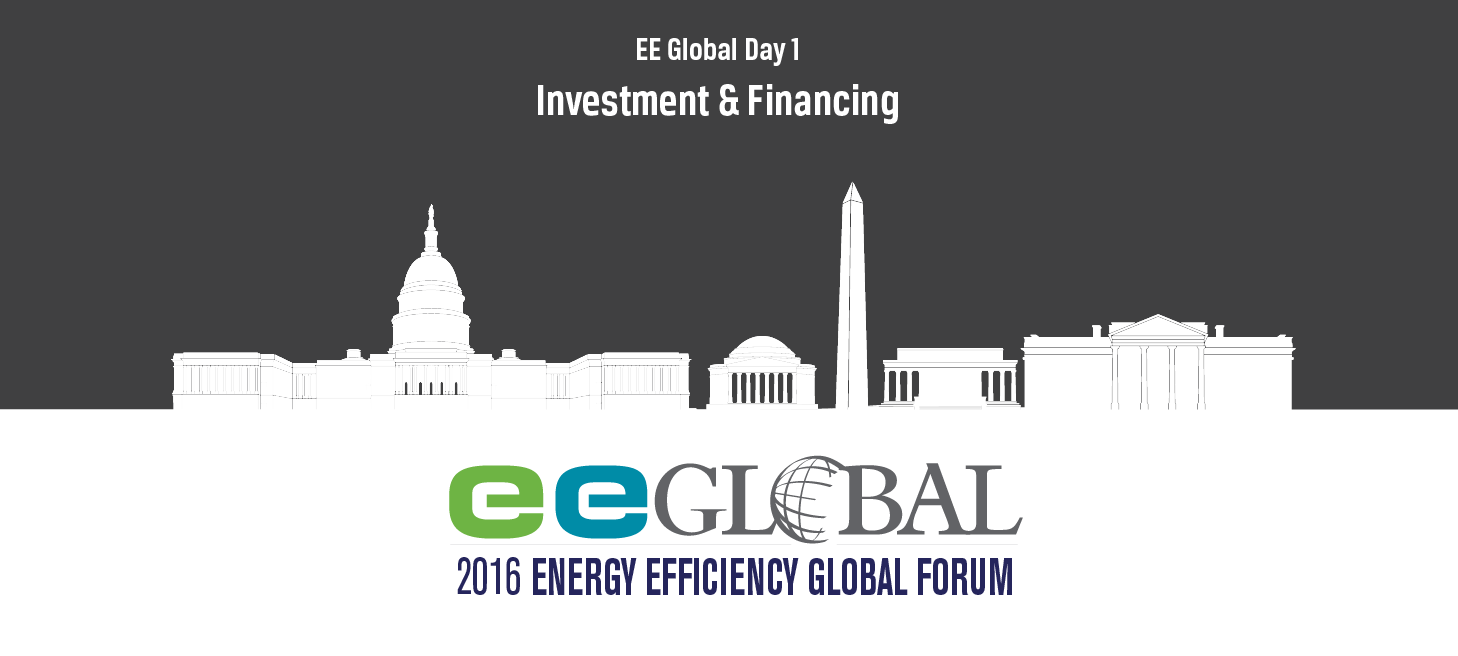Executive Dialogues: Investment & Finance
Let's Save Energy
Alliance to Save Energy's Blog

Check out today's EE Global Forum highlights for the Innovative Technologies & Business Models executive dialogue sessions:
- 1D: Institutional investments: Do gains in energy productivity and sustainability resonate with big investors?
The first panel on institutional investments discussed the growing attractiveness – but also the barriers to – big investors investing in energy productivity and sustainability. Energy trends reported in the Sustainable Energy in America Factbook demonstrate that GDP can be decoupled from energy use, as GDP has risen significantly alongside a much smaller increase in energy consumption. Compared to alternative energy sources, energy efficiency plays the starring role in these energy productivity gains and accordingly can produce the “biggest bang per buck” in an investment portfolio. Panel speakers, including investment firm and advisory group representatives, noted that a portfolio of energy-productive investments is especially attractive for institutional investors with long-term perspectives such as pension plans. This type of investor is already beginning to shift away from electric utilities, oil, gas and goal investments due to risks to the business models in these industries, which – barring a change to business as usual – are threatened by the rise of energy productivity, energy efficiency and renewable energy. ClimateWorks Australia has recently conducted research that identified industries with the greatest energy productivity gains, and these are ripe for engagement by big investors.
Traditionally, energy efficiency has been a more challenging area in which to structure investments. Whereas there is a long history and expected returns for the utility, oil, gas and coal markets, investors lack the historical perspective of and confidence in energy productivity investments. Consequently, there is growing focus in the investment community on goal setting and disclosure (e.g., via EP100), and advisors are engaging with companies to help them understand how energy productivity improvements can make them more attractive, competitive investments – and through this, cultivate investor confidence in this type of investment.
There was also discussion on the merits of investing generally in companies that facilitate energy productivity in their market and for end users of their products and services, versus investing in projects that improve company operations. Some gap in financing exists because institutional investors fund more at the corporate level, whereas there remains a significant need for attractive, accessible project-level financing. In either case, culture change is a significant challenge in cultivating company buy-in from the factory worker to the CEO and Board, and instilling confidence in the potential energy/cost savings. Both of these, it was noted, are necessary for companies to engage in the goal setting and disclosure that the market increasingly demands.
- 2D: Transitioning finance: What are the challenges of moving away from traditional grant-based programs and upscaling alternative energy efficiency financing programs?
Goals for energy efficiency and energy productivity have never been grander or more ambitious than they are now. On the heels of the COP-21 international climate agreement, the need for investments is likewise greater than ever before. According to panel moderator Peter Sweatman of Climate Strategy & Partners, annual investments worth $430 billion are needed to satisfy demands driven by global goals.
The challenge? Traditionally, energy efficiency projects have been encouraged primarily through grants, rebates, and tax credits and deductions. But these “one-way street” public-sector incentives are extremely limited and therefore inadequate. For comparison purposes, annual U.S. utility investments in energy efficiency add up to about $7 billion. Even the federal stimulus funds provided between 2009 and 2012 in response to the “Great Recession” totaled only $35 billion. In other words, we have a big gap on our hands to fill and overcome.
Necessity is the mother of invention, which is underway in developing new financing programs to leverage scarce public-sector grant dollars according to this premier collection of expert panelists. Innovation in aggregating and securitizing loans. Innovation in collateral and security. Innovation in new partnerships across the public and private sectors. And innovation in communicating the value of energy efficiency financing to traditional investors. Only if these innovations come together, which each panelist is committed to facilitating, will we have the capital to invest in critical energy efficiency projects.
STAY EMPOWERED
Help the Alliance advocate for policies to use energy more efficiently – supporting job creation, reduced emissions, and lower costs. Contact your member of Congress.
Energy efficiency is smart, nonpartisan, and practical. So are we. Our strength comes from an unparalleled group of Alliance Associates working collaboratively under the Alliance umbrella to pave the way for energy efficiency gains.
The power of efficiency is in your hands. Supporting the Alliance means supporting a vision for using energy more productively to achieve economic growth, a cleaner environment, and greater energy security, affordability, and reliability.



